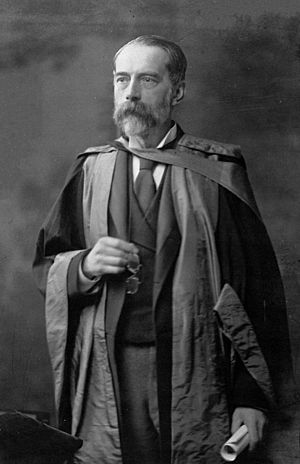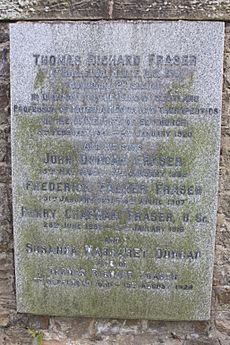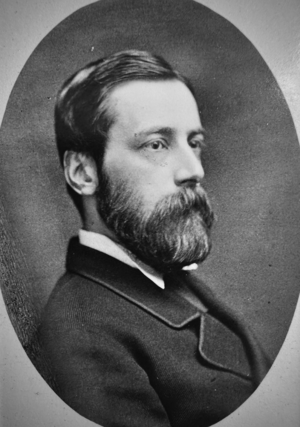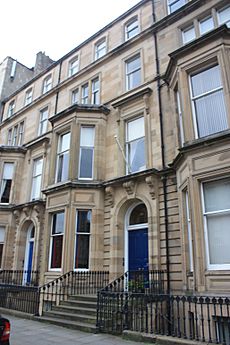Thomas Richard Fraser facts for kids
Quick facts for kids
Thomas Fraser
|
|
|---|---|

A photograph of Fraser by Andrew Swan Watson
|
|
| Born | 5 February 1841 |
| Died | 4 January 1920 (aged 78) |
| Alma mater | University of Edinburgh |
| Awards | Keith Medal (1891-93) Cameron Prize for Therapeutics of the University of Edinburgh (1897) |
| Scientific career | |
| Fields | pharmacology |

Sir Thomas Richard Fraser (February 5, 1841 – January 4, 1920) was an important British doctor and scientist. He studied how medicines affect the body, a field called pharmacology.
Working with another scientist, Alexander Crum Brown, he made a big discovery. They found a link between how chemicals are built and how they act in the body. This helped us understand how medicines work.
Contents
Early Life and Education
Thomas Fraser was born in Calcutta, India, on February 5, 1841. His father, John Richard Fraser, worked for the Indian government.
Thomas later moved to Scotland and studied at the University of Edinburgh Medical School. In 1862, he earned his medical degree (MD). He even won a gold medal for his excellent work! His special project was about a medicine called physostigmine. This medicine had been found earlier, but people mostly thought of it as a poison. Thomas Fraser showed how it could be used to help people.
Career and Discoveries
In 1869, Fraser started working as a medical assistant at the Edinburgh Royal Infirmary. He became a professor of medicine at the University of Edinburgh in 1877 and taught there until 1918. He also became the Dean of the Medical Faculty in 1880, which means he was in charge of the medical department.
Sir Thomas Fraser was very interested in poisons and how they could be used as medicines. He studied arrow poisons from places like Kenya and Nigeria. He also looked closely at plants like the Calabar bean and Strophanthus hispidus, which are very poisonous. His research helped doctors understand how these substances affect the body.
In 1897, he received the Cameron Prize for his work on treatments. From 1898 to 1899, he led a government group that studied the plague in India. For his important work on the plague, he was made a Knight in 1902 by King Edward VII. This means he was given the title "Sir."
He also led the Royal College of Physicians of Edinburgh from 1900 to 1902. He was a respected expert and advised insurance companies and the Scottish Prison Service.
Awards and Recognition
Thomas Fraser was recognized by many important scientific groups. In 1867, he became a member of the Royal Society of Edinburgh. He later served as the Vice President of this society. He also became a member of the Royal Society in 1877, which is a very high honor for scientists.
He received special degrees from many universities, including Aberdeen, Glasgow, Cambridge, and Dublin.
Personal Life
Sir Thomas Fraser lived at 13 Drumsheugh Gardens in Edinburgh. He was married to Susanna Margaret Duncan Fraser. They had three daughters and eight sons.
One of his sons, Lieutenant Commander William St John Fraser, was a submarine commander who died in World War I. Another son, Sir Francis Richard Fraser, also became a professor of medicine, following in his father's footsteps.
Sir Thomas Fraser passed away in Edinburgh on January 4, 1920. He is buried in Dean Cemetery in Edinburgh.
Artistic Recognition
A drawing of Sir Thomas Fraser from 1884, made by William Brassey Hole, can be seen at the Scottish National Portrait Gallery.



